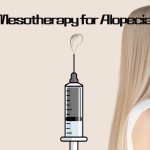The Ultimate Solution for Hair Restoration
Hair transplantation is widely regarded as the most definitive and lasting remedy for alopecia. This surgical approach leverages the principle of donor dominance-meaning transplanted hair follicles taken from the donor area can continue to grow naturally throughout their lifetime.
However, a hair transplant is not a one-time cure. Post-surgical care remains essential because:
– The survival rate of transplanted hair is not 100%.
– Surrounding native hairs are still vulnerable to testosterone-related thinning.
– Proper scalp health maintenance is necessary to protect both transplanted and existing hair.

FUT – Follicular Unit Transplantation
Procedure:
– A thin, long strip of tissue is harvested from the donor area.
– Using a stereomicroscopic dissector, the strip is divided into individual follicular units.
Advantages:
– High stability and speed in surgery.
– Lower cost compared to other techniques
.- Suitable for patients requiring a large number of grafts.

FUE – Follicular Unit Extraction
Procedure:
– Each follicular unit is individually extracted using microscopic circular incisions.
Advantages:
– Ideal for small graft requirements.
– Best for patients concerned about large linear scars or significant post-surgery discomfort.

Slit / DHI – Direct Hair Implantation
DHI (Direct Hair Implantation):
– Uses a pen-type DHI implanter for direct and efficient placement of hair follicles.
– Shortens operation time while offering precision in follicle positioning.
Slit Method:
– A more meticulous approach that creates custom slit incisions for each graft using special surgical blades.
– Can improve the survival rate of transplanted follicles by optimizing placement and scalp integration.

Beyond Surgery – Integrating AesMed’s AGF39™ for Better Outcomes
While hair transplantation addresses the structural restoration of hair, combining it with AesMed’s AGF39™ cytokine mesotherapy can enhance long-term success:
– Stimulates follicle stem cells for stronger, healthier growth.
– Extends the anagen phase of hair cycles.
– Improves scalp health, supporting both transplanted and native follicles.
Patients who complement their transplant with professional AGF39™ scalp therapy and targeted home care (Advance Follicle Shampoo) often experience higher retention rates and better overall density.

Conclusion
Hair transplantation is a powerful tool in alopecia treatment, but its best results come from a comprehensive approach-combining surgical precision with scientific scalp therapies and consistent home care.
To explore the right treatment plan for you, including hair transplantation and AGF39™ clinical programs,
visit: www.aesmed.co.kr











